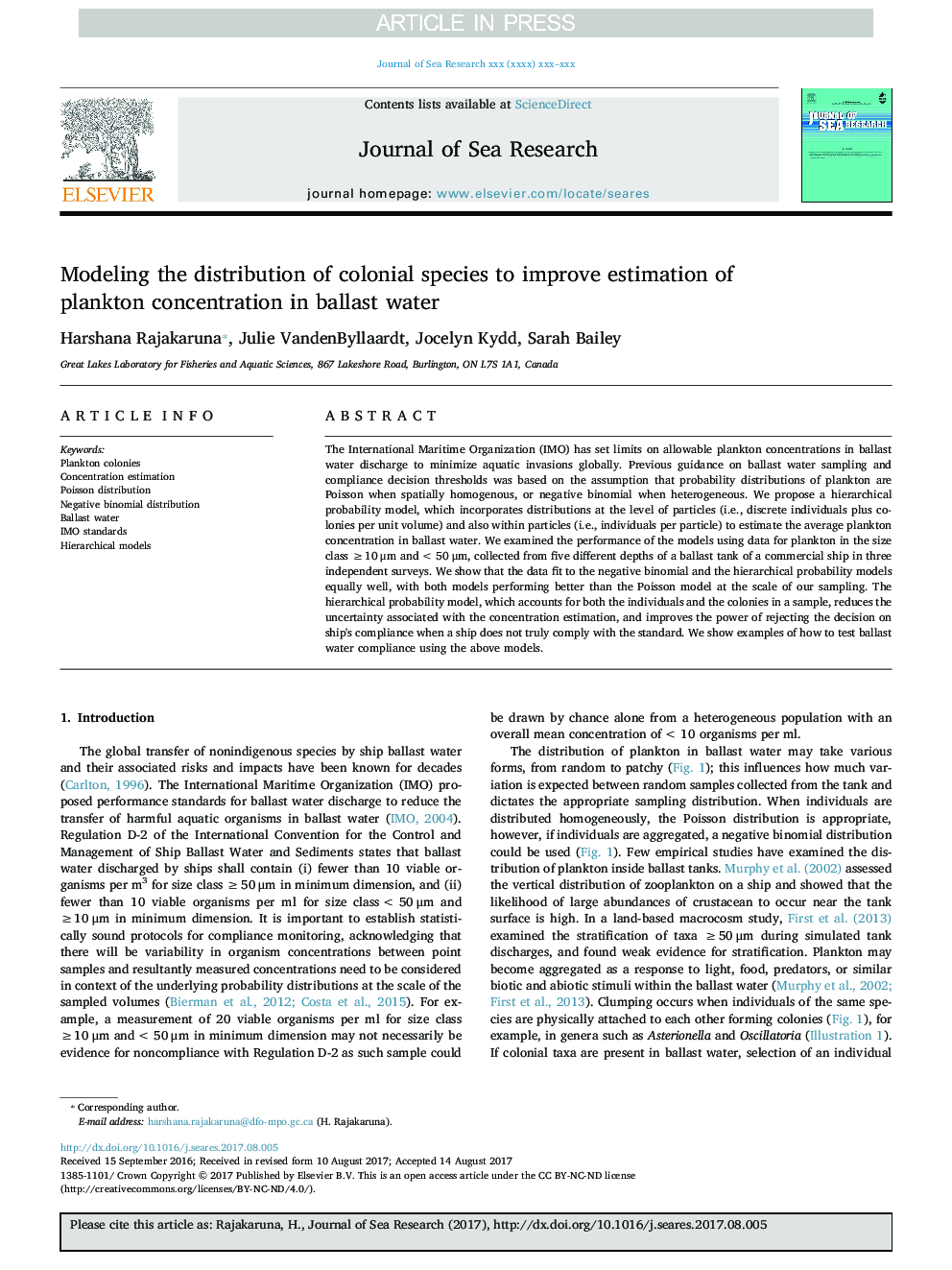| Article ID | Journal | Published Year | Pages | File Type |
|---|---|---|---|---|
| 8886172 | Journal of Sea Research | 2018 | 11 Pages |
Abstract
The International Maritime Organization (IMO) has set limits on allowable plankton concentrations in ballast water discharge to minimize aquatic invasions globally. Previous guidance on ballast water sampling and compliance decision thresholds was based on the assumption that probability distributions of plankton are Poisson when spatially homogenous, or negative binomial when heterogeneous. We propose a hierarchical probability model, which incorporates distributions at the level of particles (i.e., discrete individuals plus colonies per unit volume) and also within particles (i.e., individuals per particle) to estimate the average plankton concentration in ballast water. We examined the performance of the models using data for plankton in the size class â¥Â 10 μm and < 50 μm, collected from five different depths of a ballast tank of a commercial ship in three independent surveys. We show that the data fit to the negative binomial and the hierarchical probability models equally well, with both models performing better than the Poisson model at the scale of our sampling. The hierarchical probability model, which accounts for both the individuals and the colonies in a sample, reduces the uncertainty associated with the concentration estimation, and improves the power of rejecting the decision on ship's compliance when a ship does not truly comply with the standard. We show examples of how to test ballast water compliance using the above models.
Keywords
Related Topics
Physical Sciences and Engineering
Earth and Planetary Sciences
Oceanography
Authors
Harshana Rajakaruna, Julie VandenByllaardt, Jocelyn Kydd, Sarah Bailey,
